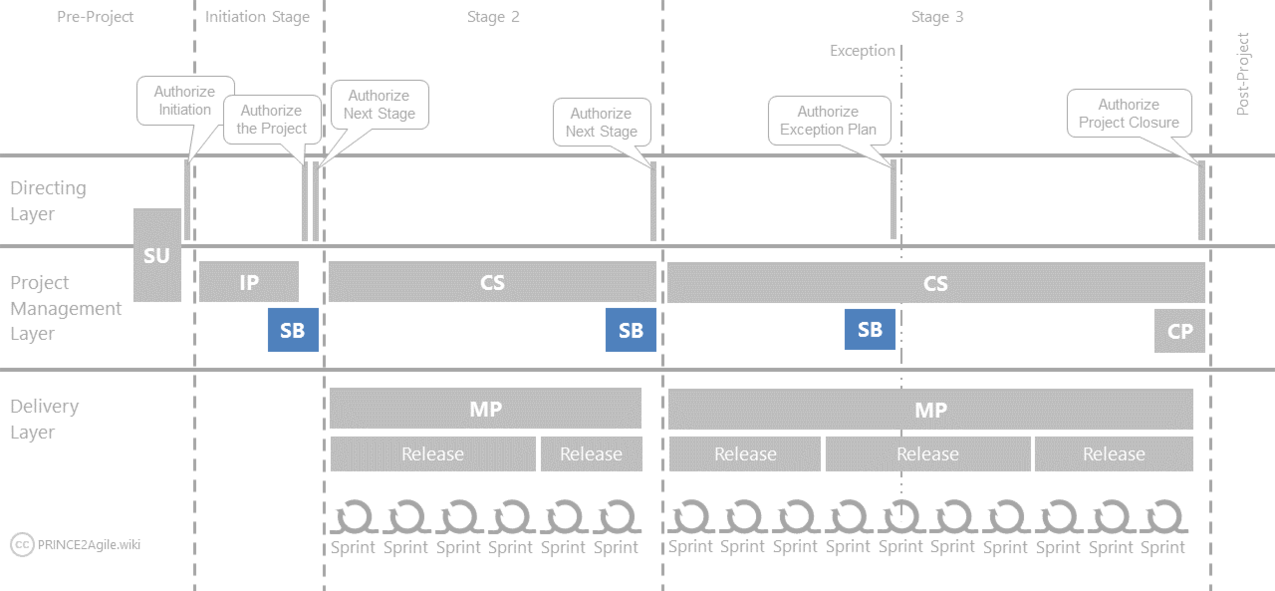Managing a Stage Boundary
The Managing a Stage Boundary is used in the following two boundaries:
- Reaching the end of the stage
- Having an exception
In both cases, the following main activities will be done:
- The justification of the project should be inspected, especially based on the business value created in the previous stages. A similar investigation should be done after each release and iteration, but the one at the stage boundary should be more serious. Remember that each stage includes one or more releases, and each release contains one or more iterations (e.g., Sprints in Scrum).
- The next stage, or the remaining of the stage that had an exception, should be planned, which also includes a high-level plan for the next releases and iterations.
- As a part of planning the next stage, the use of Agile in the previous stages should be investigated and major improvements planned.

Adaptation Layers
Managing a Stage Boundary should be regarded as another opportunity for adaptation:
- Iterations: small adaptations, mainly decided by the delivery team
- Releases: intermediate-level adaptation, mainly decided by the Project Manager
- Boundaries: high-level adaptation, mainly decided by the Project Board
For example, if a change in the market makes a big difference in the project, there would be a large deviation in project targets because of the changes in business values, which in turn, causes an exception, and results in a high-level adaptation (change) decided by the Project Board.
See Also
- End Stage Report
- Plan management product
- Plans theme
External Links
- Managing a Stage Boundary process in PRINCE2 wiki
Written by Nader K. Rad
This is (and will be) a work in progress: More details will be added in the future, depending on the feedback.
This wiki is developed and managed by an accredited trainer, independent of AXELOS. While aligned with their guidelines, it’s not an official resource.
